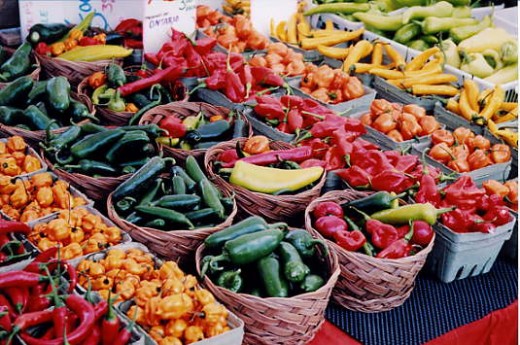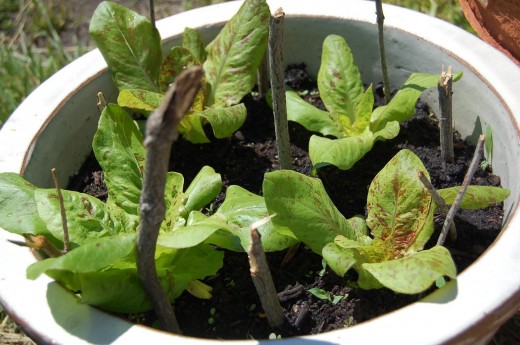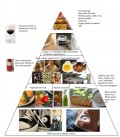Whole Foods We Can Afford.

Healthy Eating on a Budget 101
How many times have you heard? Whole foods are better for you! You need more vitamins and minerals on your diet! You need this you need that! I've probably heard this and read about it a million times, well at least since I can remember.
What are whole foods to be exact? Finding the right definition can be a bit confusing, as to many may think of organic foods the same as whole foods. Although eating organic can be healthier by having less fillers and preservatives, by consuming whole foods you are most likely be getting more nutritional value.
According to "Wikipedia", whole foods are unprocessed and unrefined, or processed and refined as little as possible, before being consumed. Whole foods typically do not contain added ingredients, such as salt, carbohydrates, or fat. Examples of whole foods include unpolished grains, beans, fruits, vegetables and non-homogenized dairy products. Although originally all human food was whole food, one of the earliest uses of the term post-industrial age was in 1960 when the leading organic food organization called the Soil Association opened a shop in the name selling organic and whole grain products in London, UK. On the other hand, "Merriam-Webster’s" definition of a whole food as a natural food and especially an unprocessed one (as a vegetable or fruit), a food that is considered healthy because it is grown naturally, has not been processed, and contains no artificial ingredients. For example, a potato is a whole food, as opposed to a potato chip in a bag that has been cut, salted, processed, colored and fried.
However, is it possible to set our own cost on consuming whole foods? YES! All is needed are the desire to discover, be diligent, patient and having an open mind for the limitless possibilities that our conscious earth is giving us today. Unfortunately, you may have to get your hands dirty in the process though!
While consuming greener healthier whole foods have the reputation of being out of reach and expensive, here are some tips to apply when it comes to increasing the nourishment of healthier wholesome foods in our family’s diet, while saving and sticking to our budget:
- Growing your own garden: If PK kids can sprout seeds in a springtime school project, then of course you can! Even if you have a tiny place living in the middle of the city, you can still grow freshness by any window of your home, such as aromatic and beneficial herbs. Even better if you have a deck; you can add a wide variety of lettuce, tomatoes and pepper plants. A sunny yard? Your opportunities are endless! Growing your own foods is the cheapest and most rewarding way to eat more fresh and wholesome fruits and vegetables. You can even recycle some of the seeds from your last harvest and sprout them again in the next season. Seeds won’t go bad if you save them in a dry, clean container, just don’t forget to write what they are, where they came from from and date it.
- Planning your weekly menu: Weekly planning meals and snacks, not only will help saving you some money by figuring out how much money you want to spend, and which “whole foods” you can afford. In addition, you will be saving by throwing away less food, you can shift spending from items like paper towels to practical reusable stuff, like sponges and cloths, or save even more by avoiding buying water in bottles; filtering or boiling water is the best method for making water safe to drink, as stated by the Centers for Disease Control and Prevention (CDC), boiling water will kill bacteria and by adding a pinch of salt to each quart will improve the taste, advises CDC.
- Buying seasonal: Fruits and vegetables in season cost less, have more nutritional value and better taste. To start saving, you will need to be diligent in browsing around your community and vicinities, for local farmers market or co-op to find recurrent items like asparagus in the spring, strawberries in the summer and kale in the fall. You can even sign up for your Community Supported Agriculture (CSA), which is a way for the public to buy locally grown food, creating a relationship with the farms, and at the same time helping to keep small farms in our community. Subscribers make a financial commitment to the farm by buying “shares” (aka a subscription). The shares provide the farm with the funds needed to plant, grow and harvest the crops and in turn the subscriber receives a box – a share - of seasonal produce throughout the season. To find out which farms in your community offer the CSA Program visit www.localharvest.org.
- Buying in bulk bins: Sometimes you can save few bucks in spices, grains, beans and more by buying large, only, if you know how to buy in bulk and by going to selected wholesale places like Sam’s, Costco, BJ’s or online at Bulk Home (www.bulkhome.com) or Food Service Direct (www.foodservicedirect.com). First, you are not paying for packaging, labeling and advertising from canned or packaged foods, and second, most likely you will only buy what you really need, so you’re less likely to throw away food.
- Making the best of your freezer and leftovers: Don’t let leftovers go to waste ever. Freeze leftover, sauces, soups and meals. You can even portion it to save some time. Or using leftovers from last night’s dinner to make a delicious and healthy lettuce wrap for lunch at work in reusable containers.
It’s important to point out that using coupons won’t work as well on whole foods healthy eating. We’ve tried a few times but failed! Our grocery savings has been merely based on being conscientious on food sources and especially in home cooking more wholesome nutritious foods. Of course, as most families on-the-go, we do have the convenience of some pre-packed grocery items, but our meals and most snacks are mainly prepared from scratch.
As more and more options are created out there, following these tips throughout the last few years has helped our family reduce our grocery shopping at least to a 50%, while considerable increasing the intake of nutritious wholesomeness in our diets.
Mind, body, soul and heart — as well as your wallets — will thank you very much!








